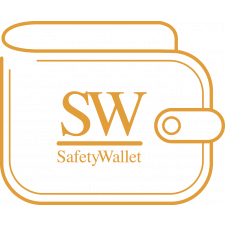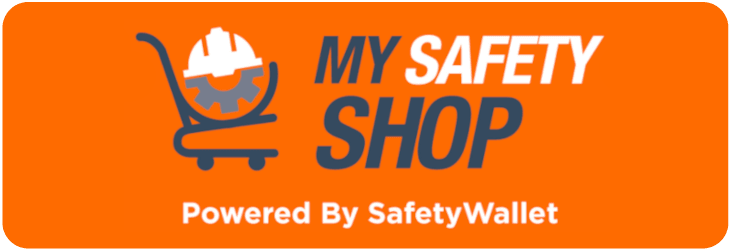How to carry out a Risk Assessment for Health and Safety
Carrying out a Health and Safety Risk Assessment
This is a systematic method that involves the process of looking at work activities and considering what may go wrong and deciding on suitable control measures. These control measures work to eliminate, reduce, or minimise the risk of loss, damages, and injuries in the work environment. Task Risk Assessment Methodology for free download.
The process involved with how a OHS assessment can be carried out is simple and can be done in five basic steps which are explored in the sections below.
Step 1 – Hazard Identification
The first step involves the identification of potential workplace hazards. Here, what could go wrong must be considered, how people could be hurt, or become ill.
This step involves:
- Discussions with employees as they may be aware of hazards that are not as obvious to the employer.
- Observe the tasks that employees carry out.
- Evaluate the accident, near miss, and occupational disease records.
- Read manuals and guides for tools and equipment.
- Check the information on the Material Safety Data Sheets (MSDS) for hazardous substances.
- Consider other situations such as faulty equipment, old machinery, maintenance, repairs, and cleaning activities.
Common Hazards
These may include, but are not limited to some of the following:
- Adverse weather
- Electricity
- Hazardous substances
- Machinery
- Manual handling
- Stress
- Noise
- Working at heights
- Vibrations
- Confined spaces, and several others.
Step 2 – Establish who may be harmed, and how
Once potential hazards have been identified, it is necessary to established who may be harmed, and how they could be harmed. It is not necessary to list employees by name, but to identify the groups of people, including:
- Employees
- Customers
- Visitors
- Contractors
- Any other person who may be affected by activities of the organisation.
It is also crucial to ensure that special consideration must be given to vulnerable people such as:
- New and expectant mothers.
- Agency and/or temporary workers
- New workers and young employees
- Migrant workers
- Remote workers who work alone
- People who have disabilities or chronic illnesses and conditions.
Step 3 – Evaluate and decide on precautions
When viewing each hazard, it is important to assess:
- The likelihood of an incident occurring.
- How severe the consequences may be if an incident or accident occurs.
By considering this, it allows for actions to be prioritised to ensure that resources are applied to where they are needed the most.
When precautions are considered, it must be done in the following order, without skipping to the easiest solution:
- Elimination which may involve redesigning the job to eliminate the need for manual handling or working at heights, for instance.
- Substitution which could involve changing a hazardous substance for one which is less dangerous.
- Engineering control such as using guards on equipment or placing barriers between employees and the hazard such as guard rails along pedestrian walkways to prevent interaction between employees and vehicles or machines.
- Administrative controls such as the rotation of employees around tasks to reduce the time of exposure in a certain environment.
- Personal protective equipment (PPE) which is only used when all other methods are not effective.
Step 4 – Recordkeeping and communication
Once the risks have been evaluated and precautions have been identified, the following must be done:
- Record key findings
- Prioritise actions
- Set deadlines for each action
- Share this information with all employees.
It is imperative to keep written record of the assessment as it is one of the first documents requested by inspectors in the event of an investigation after an adverse event, such as an accident or breach, has occurred.
Step 5 – Review
Risk assessments must be reviewed regularly to ensure that they are still valid. It is also advisable to review them once a year as well as when there are changes to any of the following:
- Equipment
- Processes
- Materials
- People
- Premises
It also has to be reviewed after an accident, incident, or a near miss to help prevent reoccurrence.
How does SafetyWallet support its subscribers?
SafetyWallet, in partnership with MAKROSAFE and OHS Online, ensures that subscribers can obtain the highest level of compliance with the OHS Act, all other Regulations, and more.
MAKROSAFE / SAFETYWALLET / MY SAFETY SHOP are all in Partnership.
Through the assistance and support in the health and safety programme of the subscriber, SafetyWallet helps subscribers with the health & safety risk assessments that must be conducted to ensure that subscribers are compliant in providing a healthy and safe working environment.
Click on the image below to find a SafetyWallet Solution that suits your business (Branch/Site specific) and get the benefits along with the subscription:
Keeping your workplace legally Health and Safety Compliant may seem like a daunting task. At MAKROSAFE, we have an experienced team of OHS experts available to assist in keeping your company Health and Safety Compliant according to South African Occupational Health and Safety Act 85 of 1993 and Regulations.
The MAKROSAFE Health and Safety Risk Control Package will assist you with your Risk Management Programme.
By signing up with our Health and Safety Risk Control Package, MAKROSAFE will assist you with your Risk Management journey.

-How-to-carry-out-a-Health-and-Safety-Risk-Assessment-Banner-1.jpg)






Comments (2)
Nice Blog
2022-11-01 13:03:13Dear Rubini Thank you for taking your time to read our blog, your positive feedback in comment is also highly appreciated...
2022-11-02 08:20:22Administrative controls such as the rotation of employees around tasks to reduce the time of exposure in a certain environment.
2022-11-12 13:01:57Dear Aditya Thank you for your valuable time reading our blogs... Your comment is highly appreciated... Follow this link for a FREE download of a Task Risk Assessment Methodology: https://www.mysafetyshop.co.za/Products/Free-Download---Task-Risk-Assessment-Methodology
2022-11-14 08:29:54